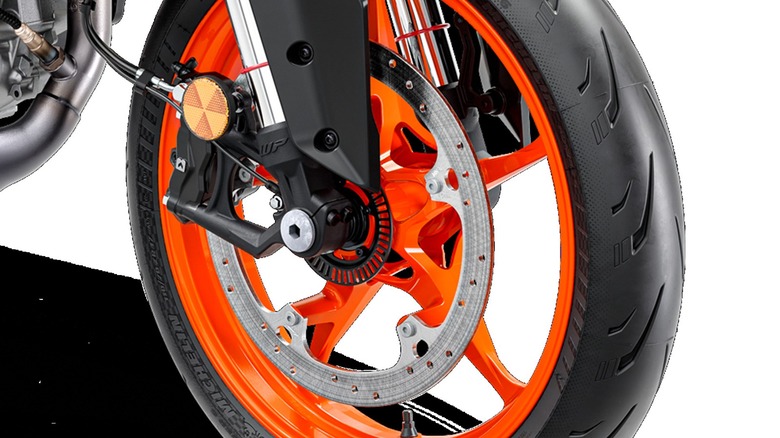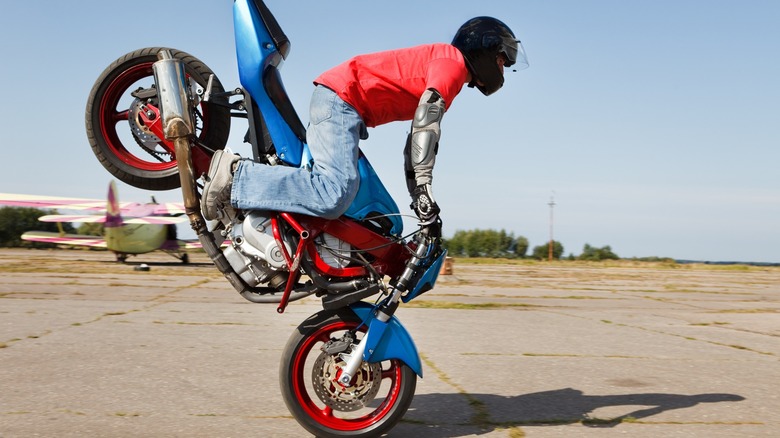ABS Vs. Non-ABS Motorcycles: Which One Is Best For Beginners?
When I started riding motorcycles in the early 1970s, ABS, short for anti-lock braking system, wasn't an option. I can still remember riding around the dealership parking lot, learning to ride my new motorcycle, grabbing too much front brake lever, and skinning my knee. Motorcycles have come a long way in the past 50 years, with advancements like ABS, traction control, and slipper clutches helping riders of all levels maintain control of their bikes, even in adverse conditions.
If you're looking for your first motorcycle or the first for a loved one, you've no doubt noticed a number of motorcycle models that offer versions with and without ABS. If this is your first stop on that journey, let me say welcome to the club and assure you that you'll find plenty of beginner-friendly motorcycles equipped either way out in the world, although some only come one way or the other. Some of the best street-legal mini-bikes even have ABS.
It's no secret that motorcycles with ABS cost more than those without it. However, the advantages of ABS, especially for the beginner motorcyclist, make it worth the extra few hundred dollars. If you're the particularly adventurous type of beginner with aspirations of more spirited riding, there are some motorcycles that allow selectable levels of ABS or even turning it off completely.
Advantages and disadvantages of ABS for motorcycles
We've already hinted that the main advantage of ABS is improved braking control. A motorcycle's ABS works in a similar fashion to the system found on every new car in the US since 2011. Wheel speed sensors monitor changes in RPM and work in concert with other sensors to anticipate and prevent brake lock-up. When activated, the ABS engages a hydraulic pump to modulate braking by applying and releasing pressure to the brakes several times per second.
The main advantage of this is increased control (and not skinning your knee) when you apply too much braking force, but stopping within the shortest distance possible is another big plus. The list of disadvantages of ABS-equipped motorcycles starts with the increased cost to the consumer. Other drawbacks include the additional moving and electronic parts employed by the system. These components can fail and/or make servicing motorcycle brakes more complicated.
Ultimately, some experienced riders find superior braking "feel" without ABS and learn, sometimes with skinned knees and torn blue jeans, to modulate braking manually. In addition, the ability to skid the rear tire into a corner and perform "Stoppies," a maneuver (shown above) where the rider stands the motorcycle on its front tire for a brief moment, is hindered by ABS.

